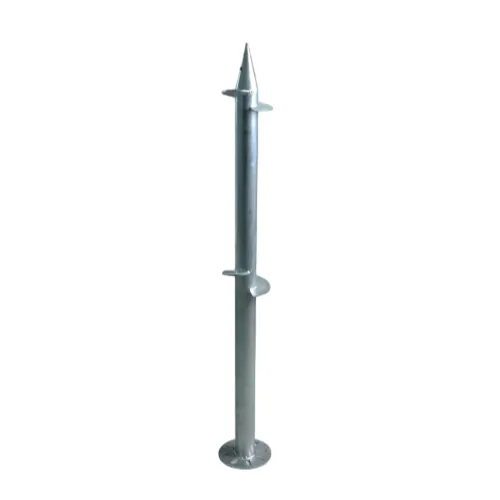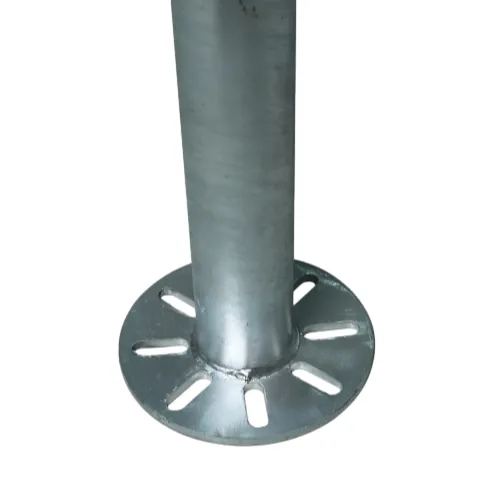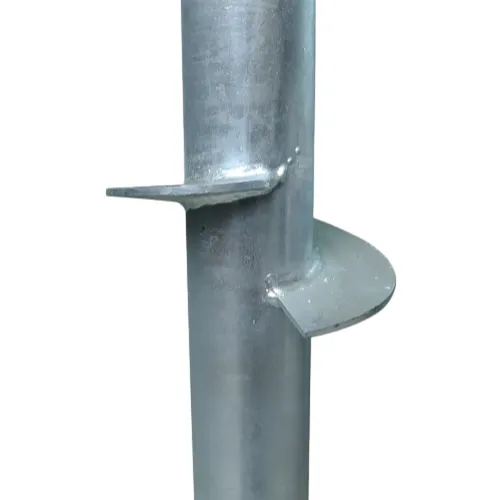

The spiral pile continues to shape the standards of foundation engineering, especially for steel structures exposed to harsh environments. As the construction industry pivots toward durability, efficiency, and sustainability, advanced foundation solutions like rigid inclusion piles and specialized piling ground technologies become indispensable.
Industry Trends & Market Insights
The global spiral pile market has witnessed a CAGR of 5.7% (2021-2024), driven by the boom in infrastructure, rapid urbanization, and the rising preference for modular steel structures in energy, petrochemical, and marine construction sectors (Source: Statista, 2024). Notably, hot dip galvanized spiral piles dominate over 40% of foundation solutions for exposed and corrosive environments, thanks to superior anti-corrosion properties and extended life cycles (Data: M&M Research, 2023).
Comparison: Spiral Pile vs. Rigid Inclusion Pile vs. Traditional Piling Ground
| Parameter | Spiral Pile | Rigid Inclusion Piles | Traditional Piling Ground |
|---|---|---|---|
| Typical Diameter (mm) | 76–325 | 180–400 | 300–1500 |
| Depth Range (m) | 3–25 | 2–21 | 10–60 |
| Material | S355/S460 Galvanized Steel | Concrete or Steel | Concrete, Timber, Steel |
| Installation Time per Unit | 20–50 min | 35–85 min | 60–120 min |
| Service Life | 50–80 years | 35–60 years | 30–50 years |
| Corrosion Resistance | Excellent (+++) | Moderate (++) | Low (+) |
| Sustainability | High (Reuse possible) | Moderate | Low |
| Compliance Standard | ISO 1461, EN 1090 | ISO 22477, ASTM A123 | ASTM A252, EN 1536 |

Product Spotlight: Hot Dip Galvanized Spiral Pile For Steel Structure Foundation
Key Technical Specifications (Model: AB-SP325HDG)
| Parameter | Specification |
|---|---|
| Diameter | 168 / 219 / 273 / 325 mm |
| Wall Thickness | 4–10 mm |
| Length | 3–12 m (customizable) |
| Material Grade | S355JR/S355J2/ASTM A36 (ISO 1461) |
| Galvanizing | ≥85μm, Hot Dip, ISO 1461 |
| Yield Strength | ≥355–460 N/mm² |
| Ultimate Load | Up to 1200 kN |
| Anti-Corrosion Life | 50–80 years |
| Welding Standard | EN ISO 5817-Level B |
| Certification | ISO 9001, EN 1090-1, CE Marked |
Manufacturing Process Explained (with Key Tech Steps)
- Raw Material: S355/S460 steel coils (mill-certified, traceable), thickness 4–10mm.
- CNC Forming: Sheets are roll-formed into pipe, minimizing ovality, assuring concentricity per EN 10219/ISO 630.
- Spiral Welding: Robotic submerged arc welding creates the signature helix. All seams tested to EN ISO 5817-Level B for quality integrity. Typical spiral angle: 17–30°.
- Hot Dip Galvanizing: Piles immersed in pure zinc, achieving ≥85μm coating (ISO 1461, ASTM A123), tested for adhesion and continuity.
- Inspection & Testing: NDT (UT, MT), static/dynamic load, dimension & straightness, coating thickness. Inspected to EN ISO 9001 protocols.
- Packing & Delivery: Custom lengths, capped, labelled, seaworthy packing.

Technical Advantages: Why Choose Hot Dip Galvanized Spiral Pile?
- Longevity: Hot dip galvanizing guarantees up to 80 years anti-corrosion lifetime (ISO 1461), nearly 40% more than conventional steel piles in aggressive soils.
- High Load Transfer: Deep helix geometry offers superior load-bearing and skin friction, especially vital for seismic or soft ground sites.
- Fast, Low-Disruption Installation: No major spoil, minimal vibration – ideal for urban, brownfield, or marine environments.
- Eco-Friendly: Reusable, minimal environmental impact, and often no need for excavation dewatering.
- Comprehensive Certification: Full traceability from steel mill to site, meeting ISO 9001, EN 1090, CE, and corrosion-resistance directly referenced in ISO 1461.
Application Scenarios: Engineering Projects for Spiral Pile & Rigid Inclusion Piles

- Steel structure foundations for industrial plants (petrochemical, power, metallurgy, logistics centers)
- Pipe rack supports, conveyor bridges in energy terminals
- Offshore and port installations (jetty, dolphins, bulkheads)
- Transmission tower and wind farm anchorage on poor soils
- Rapid foundation for modular buildings (schools, hospitals, emergency shelters)
- Environmental engineering (seawalls, water treatment, pipeline supports in aggressive soils)
Typical Project Case: Power Plant Steel Structure Foundation
Leading Manufacturers Comparison
| Manufacturer | Main Product | Certifications | Global Projects | Delivery Cycle |
|---|---|---|---|---|
| AOBANG METAL | Hot Dip Galvanized Spiral Pile | ISO 1461, EN 1090, CE, ISO 9001 | Energy, Ports, Water, Africa/Asia/EU | 15–25 days |
| ESC Steel | Helical Spiral Pile | ISO 9001, EN 1090, PED | Marine, Oil, Rail, MidEast, NA | 26–45 days |
| Hebei Yonggu | Steel Spiral/Rigid Inclusion | ASTM, ISO 1461, SGS | Water, Civil, SE Asia, EU | 20–32 days |
| Valiant Piling | Steel & Concrete Piles | EN 1536, ISO 9001 | Infrastructure, AU/NZ | 28–62 days |
Customization & Delivery Commitment
- Full Customization: Diameter, length, helix pitch — custom-designed by structural engineers in line with site requirements & soil reports.
- Rapid Delivery: Standard lead time 15–25 days; expedited available for urgent projects.
- Quality Guarantee: 10-year warranty (material/workmanship); 24/7 technical and project support.
- Inspection & Acceptance: Factory acceptance test (FAT), third-party inspection, and shipping by certified logistics partners.
Customer Experiences & Service Cases (2021–2024)
- Oil Terminal Expansion (UAE, 2023): Installed 950 sets of spiral piles (219mm × 7m, S355, HDG) for pipeline supports, achieving 30% faster installation, zero corrosion warranty violations in the first year.
- Wastewater Plant Project (Southeast Asia, 2022): Rigid inclusion piles combined with spiral pile foundations, reducing settlement risk and maintenance need, complying with FDA process water piping codes.
- Renewable Wind Farm (Northern Europe, 2024): 700 spiral piles installed, snow/ice-resistant; performance validated by Galvanizers Association.
Data Visualization: Comparative Charts
Durability Comparison (Service Life, Years)
Installation Cost Comparison
FAQ: Spiral Pile & Piling Ground Technology
Delivery Time, Warranty & Support
- Standard Lead Time: 15–25 working days for 100–2000pcs (spiral pile Ø219–325mm; longer for mega-projects).
- On-Site Technical Support: Engineer deployment for installation supervision, training, and dynamic verification tests.
- Warranty: 10 years (material, anti-corrosion, and workmanship); third-party insurance available.
- After-sales Service: 24-hour response, spare parts, annual pile health checks, remote video support.
• Technical Review: “Performance of Helical Piles in Soft Ground Foundations” — ASCE Geo-Technical Journal (2023)
• Industry Case: “Galvanised Pile Foundations in Corrosive Soils” — Engineering News (2022)
• Association: “Advances in Spiral and Helical Pile Technology” — Galvanizers Association (2022)
• Journal: “Comparison of Steel Pile Corrosion in Marine Environments” — Construction & Building Materials, Elsevier (2024)
-
Unique Design Ideas for Wrought Iron Wall DecorNewsJul.21,2025
-
Stainless Steel Pulley for Marine ApplicationsNewsJul.21,2025
-
Safety Features in Industrial Track PulleyNewsJul.21,2025
-
Precision Tolerances for 2 Inch U Groove WheelsNewsJul.21,2025
-
Iron Fence Spears Corrosion Protection MethodsNewsJul.21,2025
-
Iron Decorative Panels for Balcony ScreensNewsJul.21,2025
-
Industrial Applications Requiring Heavy Duty PulleyNewsJul.21,2025












